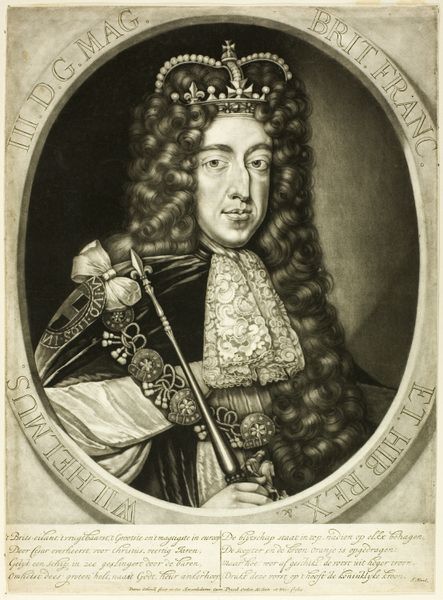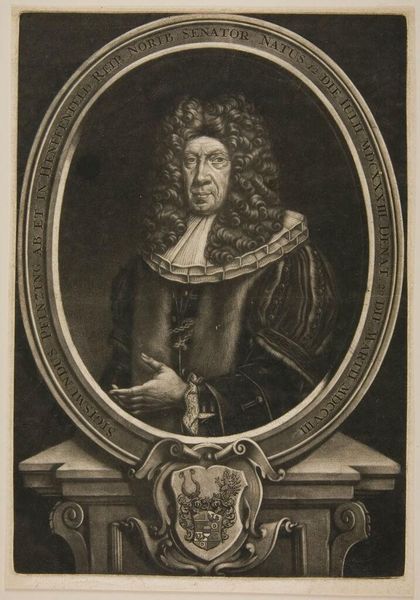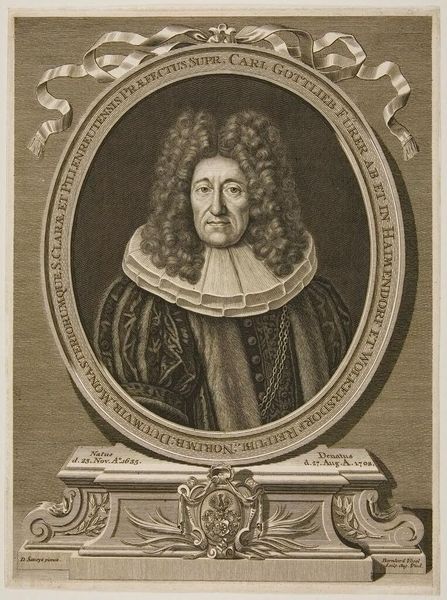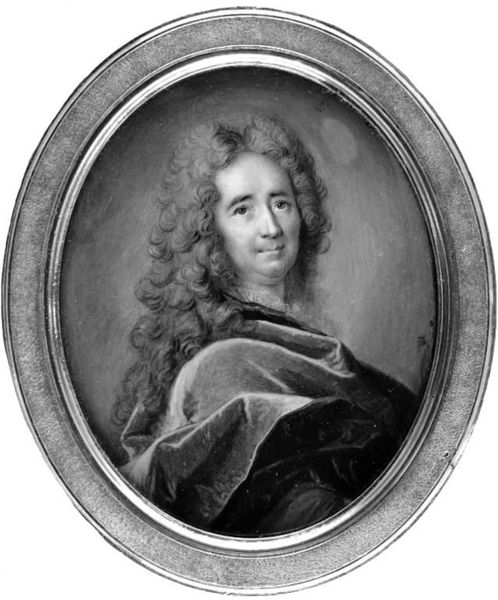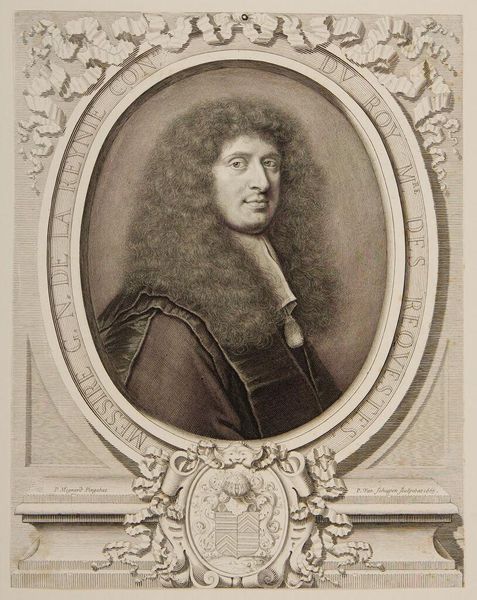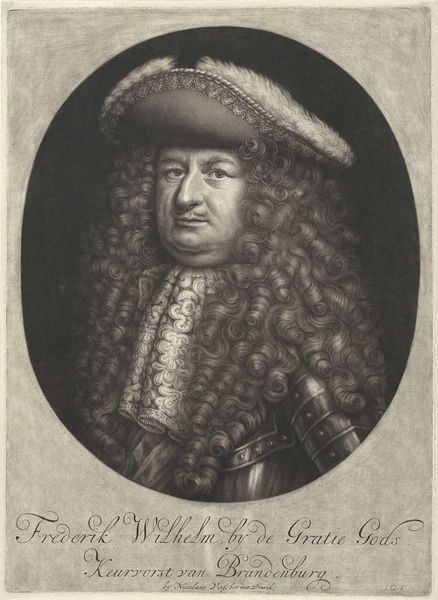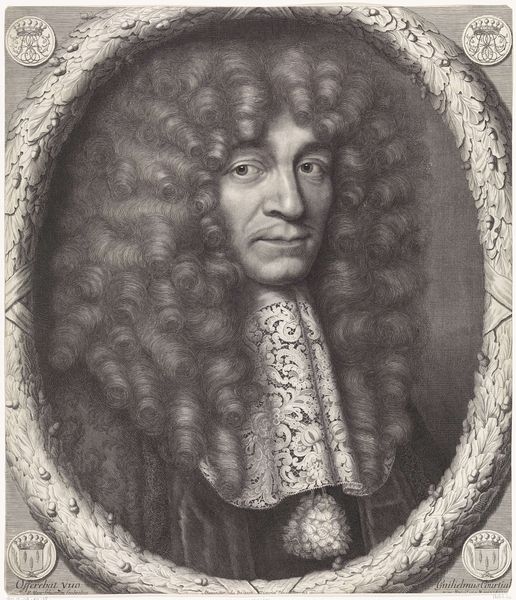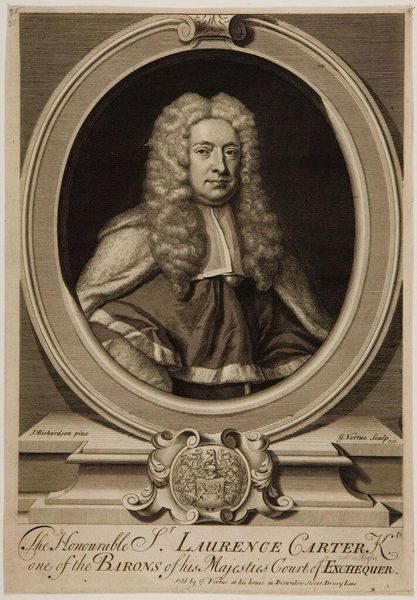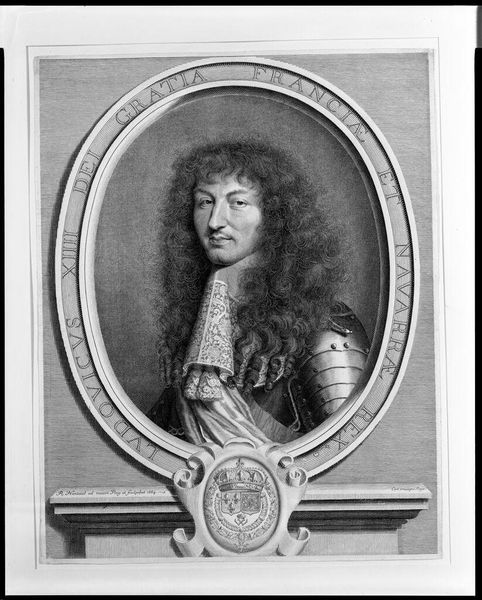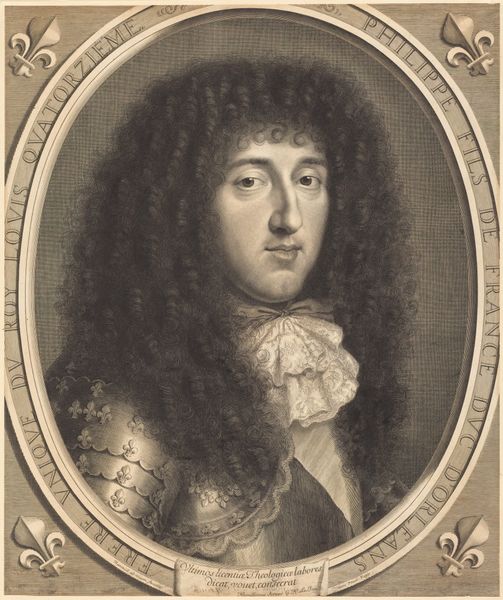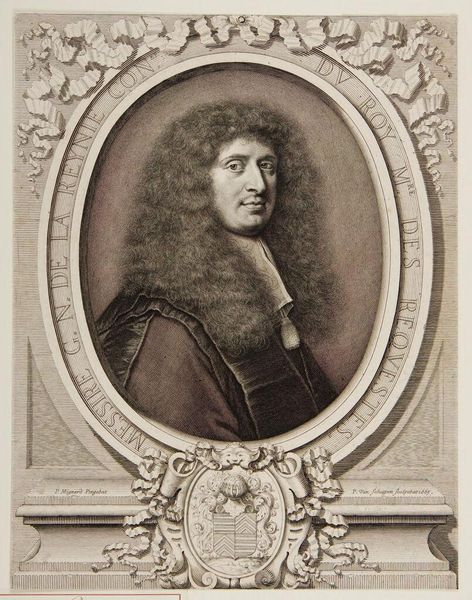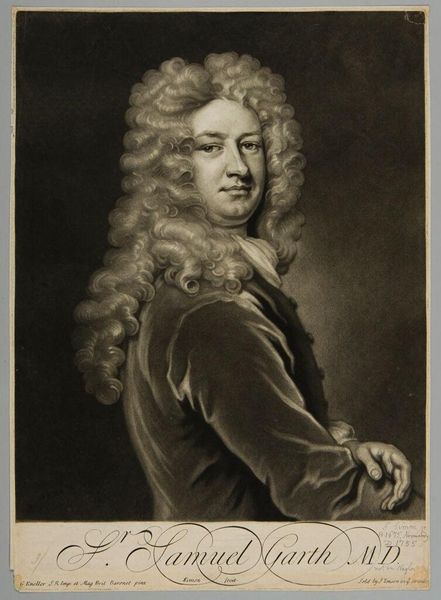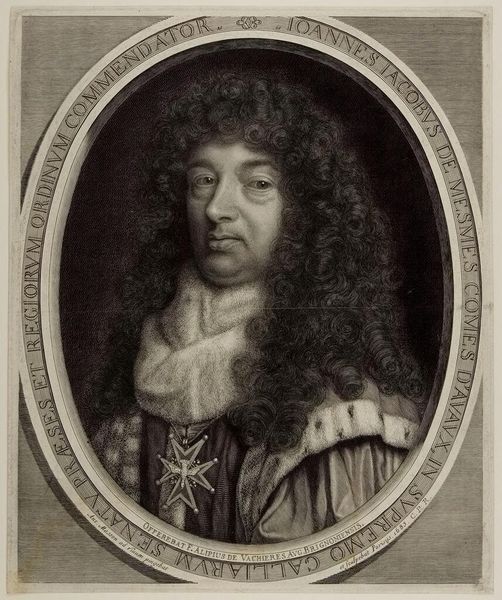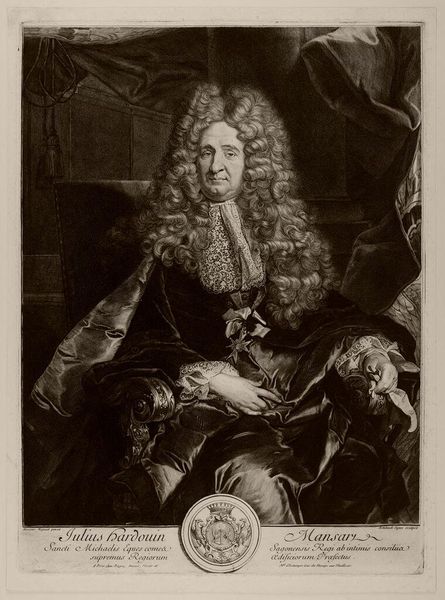
painting
#
portrait
#
baroque
#
portrait
#
painting
#
history-painting
Dimensions: 9.4 cm (height) x 6.7 cm (width) (Netto)
Editor: This portrait is "Karl VI, Emperor of Austria" painted in 1727 by Andreas Møller. The overwhelming amount of ornamentation certainly speaks to the subject’s wealth and status, but I find the heavy wig and ornate clothing to be a bit suffocating. What's your take on it? Curator: It's essential to consider what such images were *for*. In 18th-century Europe, portraiture like this wasn't just about likeness, it was about power. It served as propaganda, projecting an image of divinely ordained authority. Consider the context: Karl VI was Holy Roman Emperor during a time of intense political maneuvering. Editor: So the artist's focus isn't necessarily on capturing Karl VI's personality but instead projecting his position in society? Curator: Precisely. Møller's painting emphasizes dynastic legitimacy through codified symbols and idealized representation. That wig isn’t just a fashion statement; it's part of a visual vocabulary that communicated specific ideas about status and imperial grandeur to those who viewed it. Editor: Do you think the museums that chose to put his paintings on display contributed to the "politics of imagery"? Curator: Museums have undoubtedly played a role in canonizing certain artists and reinforcing specific historical narratives. Displaying portraits like this often validates traditional power structures, even unintentionally. We should critically assess which figures get memorialized in this way and ask *why*. Editor: I suppose that viewing it through this lens does offer new ways of understanding its intended role and continued display within museums. Curator: Absolutely. By acknowledging the power dynamics embedded in such seemingly straightforward portraits, we are able to have a more nuanced understanding.
Comments
No comments
Be the first to comment and join the conversation on the ultimate creative platform.
